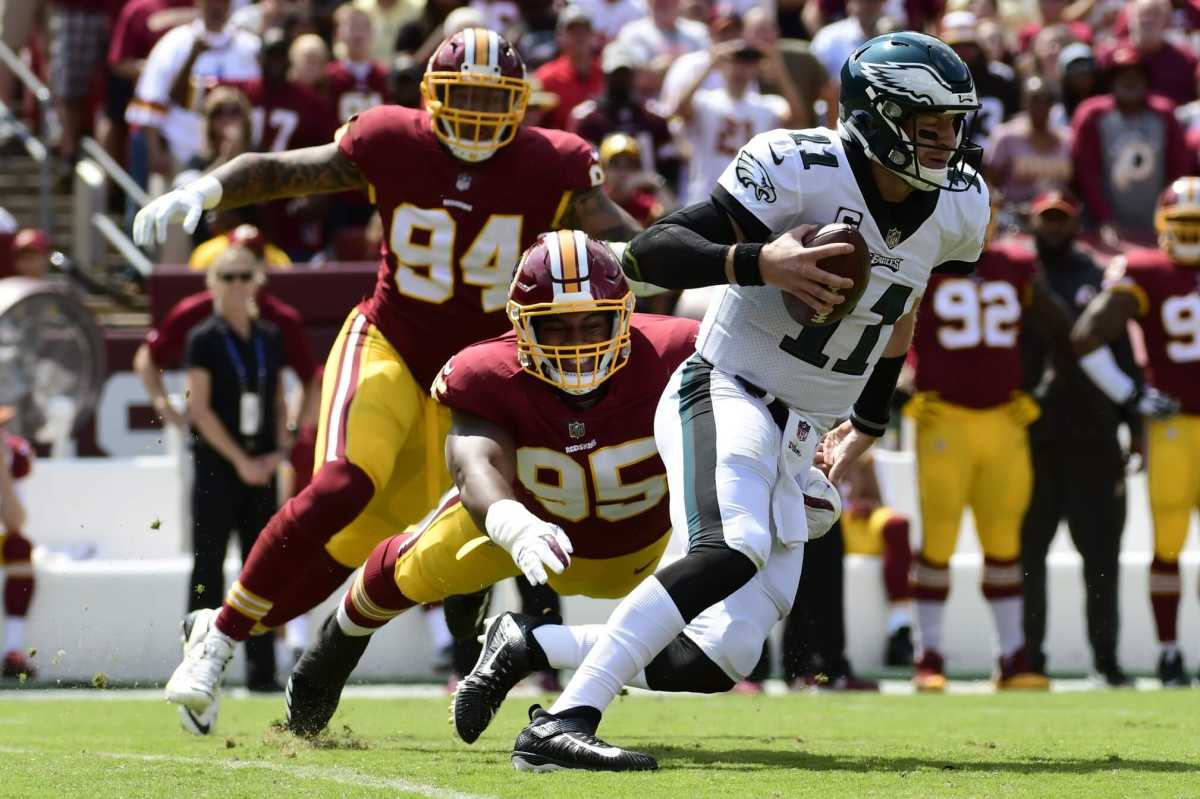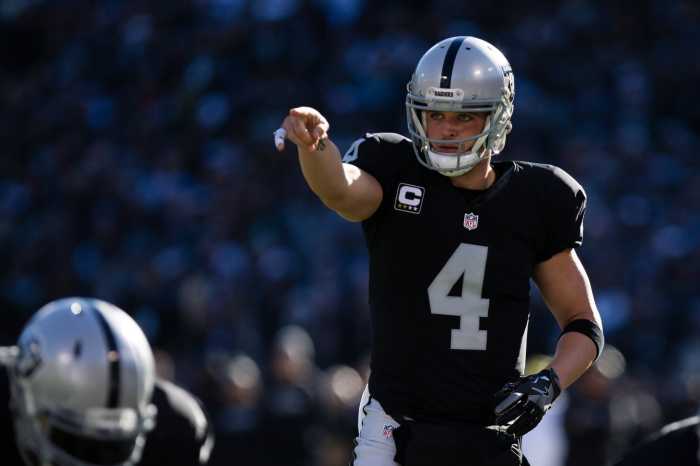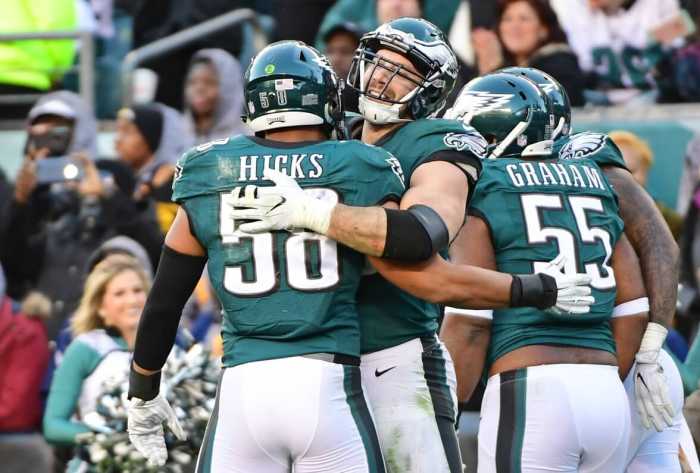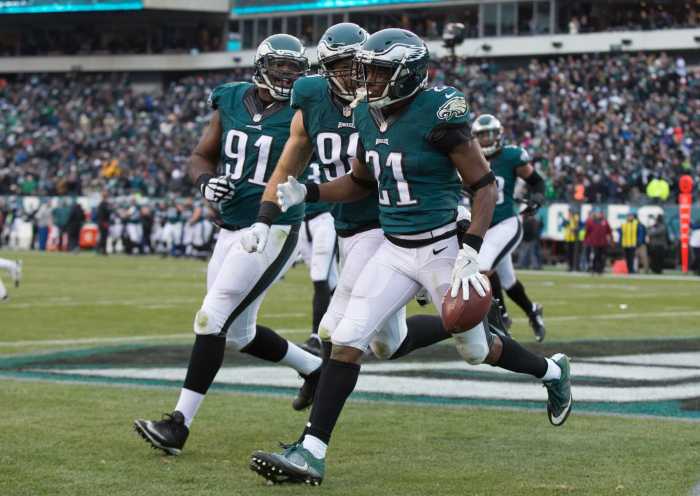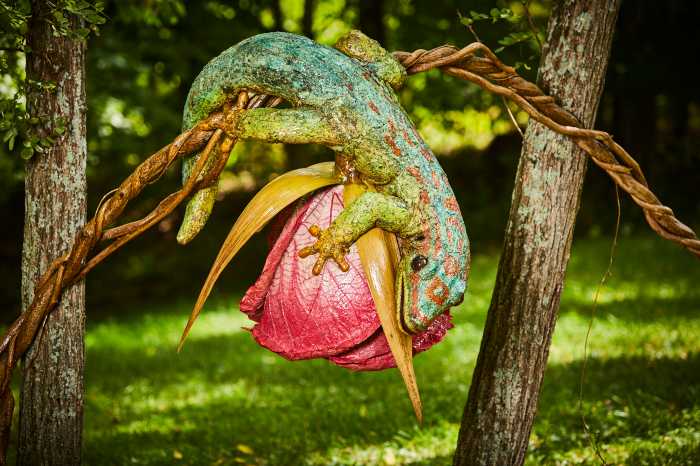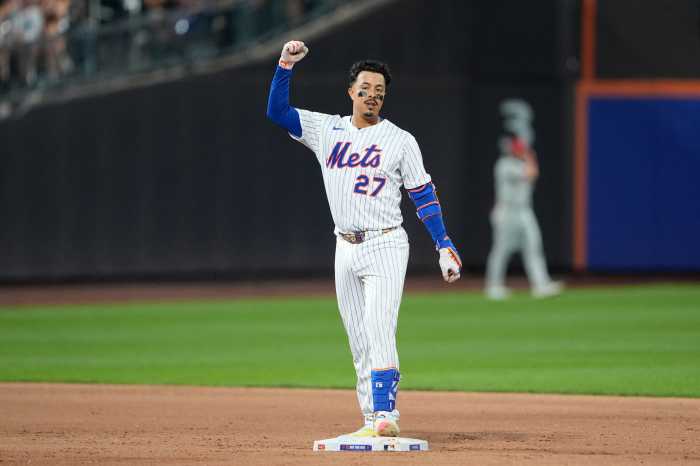There was football on my TV! Pinch me. It was a pretty blase preseason clash between the Bears and the Ravens, but it counts! Today, while I try to contain my excitement, we will be beginning with our in-depth examination of the Redskins’ defence. Starting with the big boys upfront, the D-Line will be looking for a spark from returning second year player Jonathan Allen. Can he be the difference maker they need him to be in 2018? Let’s find out.
Defensive Line
It’s perhaps unfair to look at the Redskins’ defensive line as a comprehensive assessment, due to the fact that they are a 3-4 defence. However, it’s easier this way, and makes for a more concise article. Especially when considering Washington’s pass rush, the men upfront get a lot of help from linebacker Ryan Kerrigan, who we will be discussing next article. In this facet, the team performed admirably, ranking 7th in total sacks and 4th in sack rate. On the contrary, they were dismal against the run. This week, I decided to put all the rankings in a nice little box.
| Scoring Defence | 388 points against | 27th |
| Rush Defence | 134.1 yards per game | 32nd |
| 13 rushing touchdowns allowed | 21st | |
| 472 rush attempts against | 4th fewest | |
| 4.5 yards per carry allowed | 29th | |
| 105 rushing 1st downs allowed | 27th | |
| Situational Run Defence* | Stuff (<1 yard allowed) | 31st |
| Power run (3rd/4th and <2 yards) | 27th | |
| 2nd level (5-10 yards allowed) | 23rd | |
| Open field (10+ yards allowed) | 16th | |
| Positional Rankings* | Against runs outside right tackle | 19th |
| Against runs to right tackle | 20th | |
| Against runs to the middle | 31st | |
| Against runs to left tackle | 32nd | |
| Against runs outside left tackle | 24th | |
| Pass Rush | 42 sacks | 7th |
| 8.1% sack rate | 4th |
*Statistics from Football Outsiders
You can see that despite facing the fourth fewest rush attempts last season, the Redskins’ run defence was absolutely awful. On runs to the left tackle, the team allowed 6.52 adjusted line yards per carry compared to a league average 3.79. They were that bad. One of the most glaring holes in the defence is smack dab in the middle. Washington has been running a 3-4 defence without a true nose tackle since Barry Cofield left in 2015. Last season they were so out-gunned that on passing downs they would deploy a variation of what most would call a “NASCAR package”, with two down linemen at the 1 and 3 technique and two upright backers on the ends. That required taking two of their better defenders – Ryan Kerrigan and Preston Smith – out of coverage and forcing the secondary into a nickel package. In any 3-4 defence, the NT position is essential. They command double teams, and occupy space to allow the extra linebackers room to operate. If that doesn’t happen, rather bluntly, you get the worst run defence in the league. The front office correctly identified NT as an area they need to address before the 2018 season.
Last season that role was filled by Evander “Ziggy” Hood. The 31-year-old started the season at left end, before being bumped inside due to injury. For some reason, coaches did not move former-Cowboy Terrell McClain (now with the Falcons) to NT, despite him being the most natural fit. In fact, former Redskins defensive end AJ Francis was cited in an interview with Hogs Haven that none of the d-lineman were keen on switching to nose. With certain reluctance, Hood stepped up to the plate. He fared as well as you’d expect an over-30 natural defensive end would. He struggled to stop the run, was bullied by double teams and finished the season with 25 tackles and 0.5 sacks. When not playing out-of-position Ziggy is a more-than-capable rotational pass rusher. He’s not terribly strong for the position, but he’s quick, athletic and at 6’3″ 305 lbs, he is a handful for short-armed tackles and undersized guards. It is unlikely that his coaches will force him back to nose tackle this season, but with a list of unproven pieces at the position, he may find his way back.
Option 1a at nose tackle for 2018, Phil Taylor, comes from high pedigree, but hasn’t played an NFL snap since 2014. Before suffering a season-ending quad injury in a pre-season game last year, Taylor was pencilled in as the starter. That was after an impressive training camp following a year away from football. While hopes are high, being 30 years old and coming off a season-ending injury does not bode well for a resurgence. He also had a major knee injury that required multiple surgeries in 2014. Notwithstanding my blatant pessimism, Taylor could be a significant addition to the defensive line. He was a 2011 1st round pick by the Cleveland Browns, which is perhaps the most unfortunate title a promising young star can be given. Still, he managed a fantastic rookie season, posting 59 tackles, four sacks and one forced fumble. In the three years following he has tallied a total of three sacks and 50 tackles in 28 games. He did not participate in OTA’s, but has been a full participant in training camp and has not looked hampered by his injury. At 6’3″ 335 lbs, he definitely has the tangibles to play the space-occupier role in the centre of this defence.
Option 1b will be 2018 first-round pick Da’Ron Payne from Alabama. Pop in Payne’s film from the Sugar Bowl against Clemson from last season, featured below, and you’ll quickly realise why he was pegged as the premier run-defender of the draft. In that game he also intercepted a pass (04:10), and caught a touchdown (04:34). At 03:29, you’ll notice an incredible “get-off” for a 311-pound man. Unfortunately, you’ll also notice a lineman who’s limited in his pass rush ability.
Such is Da’Ron Payne in a nutshell. He has the ability to absorb double teams, and will command them at times. College opponents were frequently forced to run away from him or find creative ways to block him. He has great balance, a fantastic anchor, good footwork and a wallop of a first punch. On top of that, this dude is strong. I mean strong for the NFL, strong – not indicated by his modest 27 reps on the bench at the NFL combine. Nonetheless, his pass rush ability will have to improve to be more than just a 2-down run stopper in the pros. Payne is not a very quick player: his surprising first step is more emblematic of his anticipation and not his athleticism. This goes hand-in-hand with his tendency to pop straight up when engaging lineman. Due to this, he’ll make a lot of plays at the line of scrimmage, but won’t make as many behind it. If a play is forced inside, Payne will quickly eat it up, but he does not have the mobility to chase running backs down the line. He is also susceptible to get caught on his blocks and reach for tackles instead of disengaging.
**GET FREE SHIPPING ON OFFICIAL EAGLES GEAR AHEAD OF THE NEW SEASON**
His pass-rush is one initial move. If offensive linemen are able to withstand his jarring first punch, the Alabama alum is next-to-ineffective on passing downs. In his three seasons with the Crimson Tide, he only registered three sacks. To his credit, he wasn’t exactly counted upon to have high numbers in that regard. With an off-season under his belt, and an opportunity to prove the doubters wrong, Payne could definitely get better in a hurry. In college he was a respected locker room leader, and his motor and drive have never been questioned. He will also be re-joining former Alabama teammates Jonathan Allen and Ryan Anderson. Familiarity with line partner Allen could be a huge advantage heading into his rookie season. As it stands now, Payne has been the starting NT during training camp, flanked by Stacy McGee and Jonathan Allen. That being said, there are still some questions as to how Payne will fit as a NT in a 3-4 scheme. Some are still adamant he suits the 3-4 end position better.
Therefore, the Redskins’ brass thought it wise to invest a 5th-round pick in Virginia Tech prospect Tim Settle. Only appearing in 23 games at the collegiate level, Settle took a big step forward last season after losing weight upon coaches’ instruction. He entered the draft measuring 6’3″ and 329 pounds. Immediately, he offers a size advantage over Payne. For a 330-pounder, Settle’s got some agility. At 00:16, he jumps off the screen with his quick burst off the line. Even from the overhead view, the guy looks large. I’m also a big fan of his happy hop sack celebration. His shortcomings come with his inexperience. He is liable to over extend, and hasn’t shown that he can be a consistent disrupter in the middle. In the passing game, he has a limited bag of tricks to pull from. Nevertheless, if he takes another big leap this season, he could be a dark horse to steal the starting spot away from Taylor or Payne. If not, he should still be a physically impressive developmental player that could sneak into the rotation sooner rather than later on third and short. The Redskins will take all the help they can get in that area.
The fourth option Washington has at nose tackle is former-Raider Stacy McGee. The 6’3″ 339 pounder had his most efficient season last year – his first in the burgundy and gold. I say that he’s an option at NT, but so far this off-season, he’s been the starting end across from Jonathan Allen. His size and skill set fits that of a 1-tech 4-3 defensive tackle. MGee is a big body with an immovable anchor: a space occupier. He was sometimes used last year as a 3-tech when the Redskins shifted to a 4-3 or nickel package. His inaugural years in Oakland were a mixed bag. He flashed some ability, as you’ll see below, but ultimately ended on the physically unable to perform list in 2015. As a pass-rusher, he doesn’t do anything inspiring, but has a nasty swim move (00:24) and moves pretty well for his size. Most of the time, however, if he isn’t able to out-muscle his opponent with a bull-rush, he is a non-factor on passing downs. His run-stopping ability is why he’s been getting snaps at defensive end over Matt Ioannidis.
Finally, we come to said defensive end position. Here, the Redskins are a tad more solidified. 3rd year pro Ioannidis will be looking to continue his upward rise into the new season. In the first five games of last season, he recorded 4.5 sacks – two against San Francisco. Eleven games later, he finished the season with 4.5 sacks. This was mostly due to the absence of Jonathan Allen and the constant shuffle at nose, but it may be indicative of a lineman that hasn’t yet learned to create for himself. Accordingly, Ioannidis cannot be counted on to beat double teams on a consistent basis. Even so, he was ranked Pro Football Focus’ 14th ranked pass rusher in 2017. He was also the only Redskin defensive lineman to play more than 50% of defensive snaps. He’s got a great balance and pass rush moves and has shown the ability to create pressure up the middle, (00:11; 00:35). He also has the strength to back blockers right into their quarterback (00:57). His aforementioned lack of run-stopping ability is why he is not the immediate starter heading into the 2018 season. To put things in perspective, the 6’3″ 305-pound Temple alum was ranked the 114th against the run last season by PFF. In his third season, he will have his work cut out for him if he figures to be more than a situational pass rusher. Apparently he is coming into this season looking leaner and meaner.
https://www.youtube.com/watch?v=5d5AMYf9_3w
Washington’s resident situational pass rusher in 2017 returns to build on his promising campaign last season. After being on the injury report for the first five games of the season – an injury he sustained during the 2016 season – Anthony Lanier finished with five sacks in the last seven games. Towards the end of the season, he was more heavily featured in the Redskins’ NASCAR package. At 285 pounds, I don’t see coaches relying on him to be a 5-tech run stopper on early downs. Thus, he will be forced to continue his specialised role. Using his 6’6″ length and strong hands, this is a role that suits him quite nicely.
The piece that ties the whole line together, the nucleus if you will, is 2nd-year Alabama product Jonathan Allen. The Redskins were considered lucky to get him after he fell to 17th in last year’s draft. In 2018, he’ll be hungry to bounce back from a season-ending Lisfranc injury that sidelined him for most of his rookie season. His stats alone won’t jump off the page – ten tackles and one sack in five games, 13 pressures on 80 pass-rush snaps – but it’s what he does for his line mates that makes him special. Preston Smith had 4.5 sacks in the five games with Allen in the line-up and 3.5 in the eleven without. Matt Ioannidis didn’t record a sack in Allen’s absence, despite starting the season off white hot. With Allen, the Redskins allowed 88 yards per game rushing, without him: 115. Those first five games included match-ups against top run games in Philadelphia, Los Angeles Rams and Kansas City. Had he not been injured, PFF states he would have been a top 20 pass rusher by season end. In his brief stint last season, Allen proved why he was the SEC Defensive Player of the Year in 2016, a unanimous All-American, a 3x First-Team all SEC and the Bednarick Trophy winner for the nation’s best defender. What stands out about Allen is his football IQ. You’ll see him sniff out a screen the second he realises he’s being given a free run to the QB at 01:12, and then his drive and determination to pursue and finish off the play. The two major knocks against Allen are his lack of length and lateral movement. Similar to Payne, he’s not really a slicer. He won’t make a ton of tackles in the backfield, but will make them at the line of scrimmage. He was well-coached at Alabama and his terrific technique could mask some deficiencies in terms of athleticism. Albeit, given a larger sample size next season, he’s almost certain to blossom into a promising young elite at his position. If all goes to plan, think Fletcher Cox 2.0.
https://www.youtube.com/watch?v=2_sp4jTyhIk
Best Case: Pro Football Focus ranks this D-Line 6th headed into this season. Even without a healthy rotation last year, the Redskins were able to finish 7th in sacks with a 4th place pass rush efficiency rating. Where they need big improvements is in their run-stopping. On paper, they are set up to accomplish that. I think this front will surprise some people. The defence as an entire unit could be a top 5 group. The key to the d line this season is depth, something they didn’t have last year. If they can keep their pass rushers fresh for 3rd downs and obvious passing situations, and stop the run on 3rd and short: this could be a scary bunch. Injuries and inexperience are their only stricture. Seeing how quickly Jonathan Allen was able to become a significant contributor, I predict more of the same from Da’Ron Payne.
Worst Case: The Redskins depend on their linebackers for pressure on passing downs, allowing them to stock up on run defenders along the line. If for any reason Ryan Kerrigan isn’t otherworldly again this season, can Payne, Allen and McGee get it done? Was there enough in Ioannidis’ film last season to merit full trust on early downs? Can Anthony Lanier be an efficient rotational pass rusher if the number ones can’t get it done? In this scenario: hard nope. With the addition of Payne, and Allen back I honestly do believe this will be an improved run defence next season. You can’t get any worse than last though, can you? If nobody steps up at nose tackle, the middle of this defence could look like the red – rather burgundy – sea for a second consecutive season. I don’t think that Tim Settle will be ready if he is forced to start early in the season, and there’s a strong possibility that Phil Taylor will never regain his 1st-round form. If the team is forced to turn to Ziggy Hood again: we know how that story ends.
Mandatory Credit: Tommy Gilligan-USA TODAY Sports

